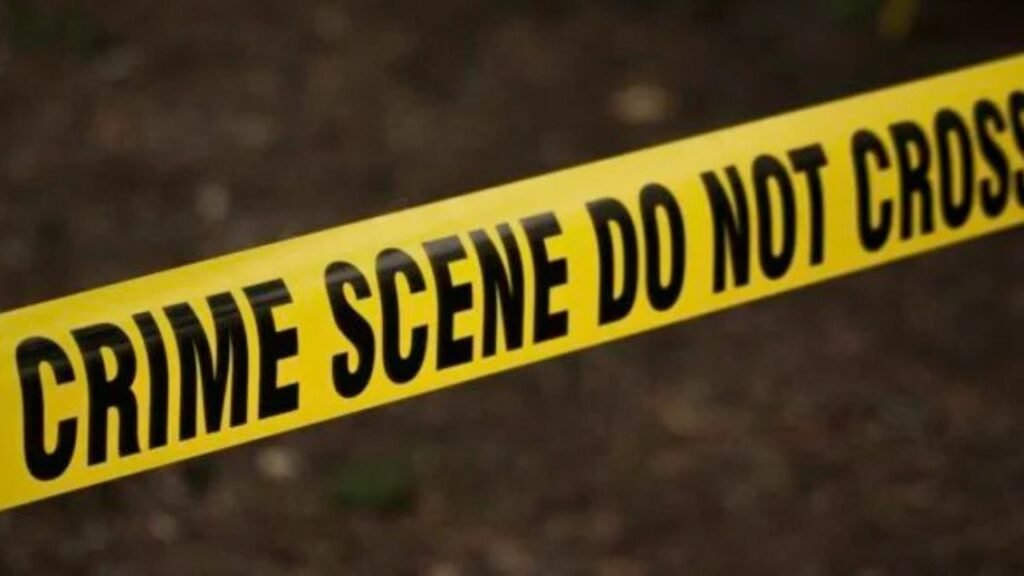Why Is It Important To Protect A Crime Scene? Protecting a crime scene preserves evidence, ensuring it remains uncontaminated for accurate investigation. It helps maintain the integrity of the case and supports proper legal proceedings.
Contents
1. Intro
Crime scenes are often messy and filled with crucial evidence supporting or undermining a criminal case. The method used to deal with a criminal activity scene in the initial phases of an examination plays a vital role in fixing the case and ensuring justice is served. Whether it’s a murder, a theft, or a theft, the security and preservation of a criminal activity scene are crucial for an efficient assessment.
In this post, we will examine the significance of criminal offense scene defence, examining the conservation of evidence, the function of first responders, preventing tampering, and how all these efforts affect legal treatments. [Why Is It Important To Protect A Crime Scene?]
2. Conservation of Evidence
Type of Evidence
A criminal activity scene is a treasure chest of potential proof, and it can take lots of types. The types of evidence at a criminal offense scene typically fall into three categories:
Physical Evidence: This includes any tangible objects discovered at the scene. Weapons like knives, guns, tools, and products like clothing, style precious jewelry, or fingerprints are all examples of physical evidence. These items are typically evaluated for traces of the criminal’s DNA or other forensic information.
Biological Evidence: Biological evidence consists of any living product that might supply DNA. This can be blood, saliva, hair, skin cells, or physical fluids left at the scene. This type of evidence can be necessary in identifying the criminal and linking them to the crime.
Digital Evidence: Numerous criminal offenses leave a digital footprint in today’s world. Monitoring footage, computer system files, clever phones, and GPS details are all digital evidence to help private investigators organize the series of celebrations. [Why Is It Important To Protect A Crime Scene?]
Properly safeguarding this proof is essential. Contaminating, damaging, or incorrectly handling evidence can significantly hinder the examination and lead to inaccurate conclusions. A single misstep, such as interrupting a piece of proof or allowing unapproved people to enter the scene, may render essential evidence inadmissible in court.
How Contamination Compromises Investigations
Contamination takes place when proof is altered, damaged, or jeopardized in some method. If someone acts on a piece of evidence or touches a piece of clothing at the criminal offence scene, they may unintentionally move their own DNA or other products.
Preserving evidence requires a fragile balance, as any modifications to the scene may customize what happened and interfere with the forensic analysis. Essential tips could be lost or polluted if criminal activity scene security procedures are not followed thoroughly. [Why Is It Important To Protect A Crime Scene?]
3. Role of First Responders
Duties in Securing the Crime Scene
The first responders to a criminal activity scene are typically police officers who have the immediate obligation of safeguarding the place. Their primary function is to ensure that the scene is secure and free of contamination. [Why Is It Important To Protect A Crime Scene?]
The very first thing officers do is establish a border around the criminal activity scene to prevent unapproved people from entering. This limit can include establishing physical barriers such as authorities’ tape and guaranteeing that no one crosses into the area unless required. The primary goal is to maintain the stability of the scene until forensic specialists can show up and start their work.
Responders likewise need to document their arrival and remember any adjustments that might occur before they secure the location. If emergency situation responders move and get here evidence or engage with the scene in any way, these actions need to be tape-recorded to preserve a chain of custody.
The Chain of Custody and Its Importance
The chain of custody describes the procedure of tracking every piece of evidence from the minute it is gathered to its discussion in court. Whenever a product of evidence adjusts hands, it must be taped. This ensures that no piece of proof is lost or tampered with during the examination.
The chain of custody is essential in protecting the trustworthiness and legality of the evidence. If even one link in the chain is broken, it might be argued that the proof was mishandled, making it inadmissible in court. [Why Is It Important To Protect A Crime Scene?]
It is the first responders’ task to begin this chain, and every subsequent private handling of the proof must continue to ensure and record each transfer that correct treatments are followed. Without a proper chain of custody, the credibility of the evidence might be cast into doubt, and the case could be compromised.
4. Preventing Evidence Tampering
Common Ways Evidence Can Be Altered or Destroyed
There are lots of techniques that can damage evidence, either actively or accidentally. The most typical kinds of tampering include:
Modification: This can happen when a specific relocation or damages evidence. Fingerprints or footprints can be harmed by cleansing or interrupting the location.
Contamination: This is when foreign substances exist to prove. A person may inadvertently include their DNA in a blood sample, rendering it ineffective for forensic screening.
Damage: Evidence might be physically messed up by accident or intent, making it challenging to recuperate or analyze. This might include burning documents or damaging electronic gadgets which contain essential information.
These actions can badly affect the course of an evaluation, causing unreliable conclusions and, eventually, wrongful convictions or acquittals. [Why Is It Important To Protect A Crime Scene?]
Legal Consequences of Tampering
Harmful evidence is an extreme criminal activity. Any person who intentionally alters, ruins, or contaminates proof can handle criminal charges. In some circumstances, those who damage a criminal activity scene can be charged with obstruction of justice. They might face severe legal penalties if their actions result in a wrongful conviction or the loss of essential evidence.
Even well-meaning people can activate damage if they do not comprehend the significance of appropriate proof handling. An individual who goes into a crime scene and incorrectly touches or moves a product of proof may accidentally threaten the case.
It is crucial to inform everyone associated with the treatment—from first responders to forensic experts—on the significance of preventing destructive evidence. [Why Is It Important To Protect A Crime Scene?]
5. Guaranteeing Accurate Analysis
How a Protected Scene Allows Forensic Experts to Conduct Thorough Analysis
Forensic professionals can begin their analysis when a criminal activity scene is secured. These experts depend on the maintained evidence to help them factor in the criminal offence and its criminal. A secured scene guarantees that no outdoor elements have jeopardized the proof, allowing experts to conduct accurate and substantial tests.
Forensic groups usually use advanced technology and methods to evaluate the proof. DNA screening, fingerprint analysis, and ballistics screening are just a few examples of forensic techniques that can provide valuable insights into a crime. The results will likely be exact and dependable when these tests are done on maintained, unpolluted evidence.
The Role of Proper Documentation in Preserving Evidence Integrity
Documentation plays a vital role in preserving the stability of proof. Every action taken at the criminal offense scene should be recorded in information, from the arrival of the first responders to the collection of proof by forensic specialists. Suitable paperwork ensures that no actions are missed and that all actions taken are proven and transparent.
Additionally, the precise recording of evidence ensures that it can be traced back to its initial state, making it more straightforward to develop its reliability in court. Without proper paperwork, revealing that the proof is legitimate and has not been damaged can be challenging.
See Also: Is It A Crime To Download Movies? The Hidden Risks
6. Effect on Legal Proceedings
How Crime Scene Protection Influences Court Cases
The approach to handling a criminal activity scene has a direct influence on the outcome of a case. If a scene is not correctly secured, crucial proof may be lost or contaminated, making it difficult to prove guilt or innocence. In such cases, evidence might be inadmissible in court, and the case might be dismissed or cause a wrongful conviction.
Courts value the integrity of the evidence presented. If it is revealed that a criminal activity scene was mishandled, the case might collapse, regardless of the other readily available evidence. [Why Is It Important To Protect A Crime Scene?]
The Risk of Wrongful Convictions
A mishandled criminal activity scene can cause terrible outcomes, including wrongful convictions. If evidence is lost, infected, or damaged, innocent people can be found guilty of criminal activities they did not commit. Alternatively, guilty individuals may go free because essential evidence that might have linked them to the crime was improperly managed.
The defense of crime scenes is not practically following treatments; it’s about guaranteeing justice, whether it leads to a conviction or an acquittal. [Why Is It Important To Protect A Crime Scene?]
7. Conclusion: Why Is It Important To Protect A Crime Scene?
Securing a criminal activity scene is one of the most important actions in any criminal examination. It ensures that evidence remains undamaged and reliable, enabling investigators to piece together the information about a criminal offense. An appropriately protected criminal activity scene results in more accurate forensic analysis, helps preserve the chain of custody, and plays a vital role in guaranteeing justice.
From first responders to forensic experts, everyone involved in a criminal activity scene investigation must comprehend the value of securing the scene. Mishandling evidence threatens the examination and can result in wrongful convictions or acquittals. By following suitable treatments and preserving the stability of the criminal activity scene, we can guarantee that justice is served.
Frequently asked questions
Why is it essential to secure a criminal offense scene instantly?
Securing a crime scene prevents contamination, damage, or harmful vital proof, ensuring the stability of the examination.
Who is responsible for securing the crime scene?
Responders, such as law enforcement officers, are responsible for securing the criminal activity scene. They ensure that only certified individuals can enter the location.
What can happen if proof is contaminated?
Contaminated evidence can lead to undependable conclusions, resulting in a wrongful conviction or acquittal, compromising the justice procedure.
What is the chain of custody, and why is it essential?
The chain of custody refers to the paperwork indicating who handles proof. It’s vital for maintaining the integrity of evidence and ensuring its appropriateness in court.
Can a mishandled crime scene impact the outcome of a trial?
Yes, if a crime scene is mishandled, it can lead to the suppression of proof, the loss of important information, and, ultimately, the unfairness of the trial.

Vicente Underwood is from New Jersey, USA. He studied law and now works with his senior. In his free time, he writes blogs. Jackson is a proud father of two girls and enjoys balancing his work and family life.




